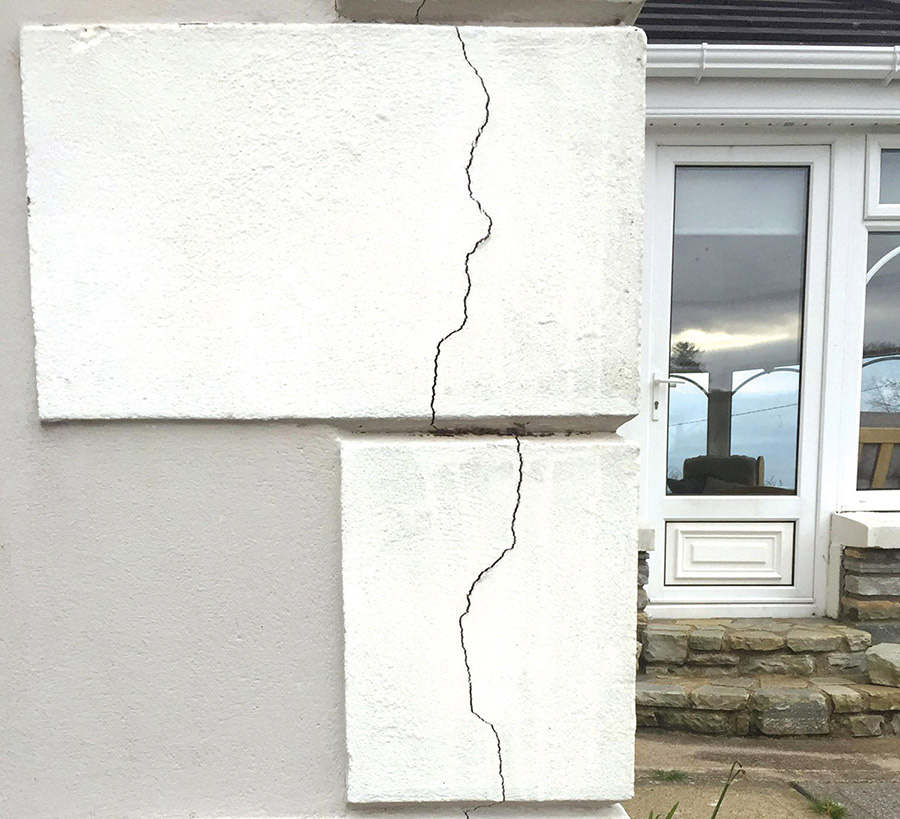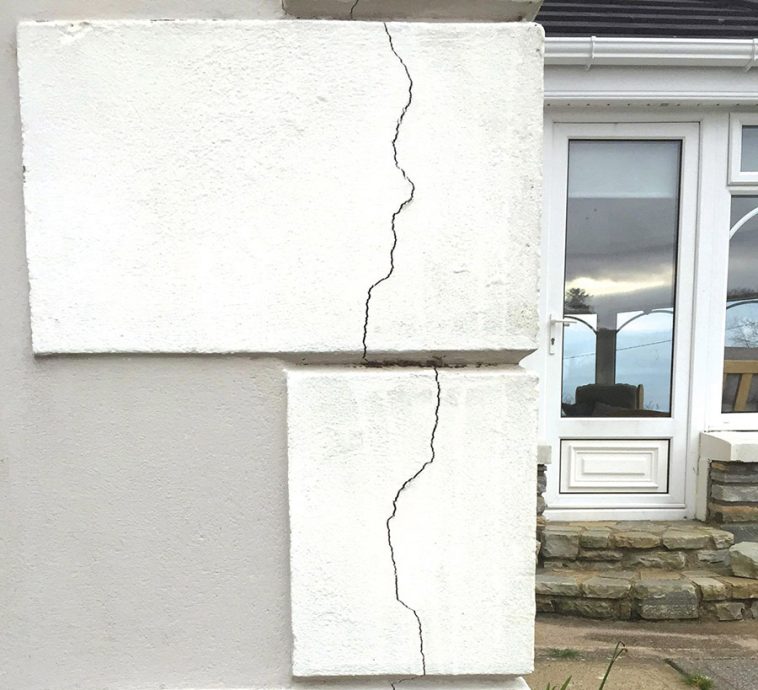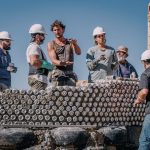Crumbling blocks have been found in at least 13 counties with fears every county in Ireland is affected, but the mica grant to fix affected homes only available in counties Donegal, Mayo, Clare and Limerick.
The General Scheme of the Remediation of Dwellings Damaged by the Use of Defective Concrete Blocks Bill 2022 is in the process of going through the Dáil. Enacting the legislation will release the €2.7 billion necessary to allow homeowners that have been affected by deleterious materials such as mica and pyrite to rebuild their homes.
Under its current form, the grant amount per home will be capped at €420k and only apply to homeowners in counties Donegal, Mayo, Clare and Limerick.
However Dr Martina Cleary, founder of Clare Pyrite Action group told the Oireachtas Committee for Housing that defective concrete blocks are suspected in 12 counties along the western and eastern seaboard. “It’s very likely in all of them, every single county,” she said.
Aidan O’Connell of Engineers Ireland said he had seen damage in 13 counties. He also highlighted that that some “quarry owners recognise they have a problem, and they are suppressing some of the information” and “doing side deals with homeowners”. He also said there were “only a few bad apples” left in the industry.
According to the Mica Action Group there have been 7,000 homes identified with defective blocks. It can take between three and 20 years for signs of damage to become apparent.
The Society of Chartered Surveyors Ireland (SCSI) published how much it thinks it will cost to rebuild mica affected homes. The Department of Housing will use these figures as the basis of its grant scheme. Here’s what we know.
According to Mica Action Group (MAG), during the late 1990s through to 2011 and possibly beyond a significant number of houses in Donegal were built with concrete building blocks containing excessive amounts of mica. Today, MAG estimates 10,000 homes have been affected over the past decade.
Mica is a naturally occurring mineral, with muscovite mica its most common form. High quantities of mica contained in the manufacture of concrete are detrimental to the blocks’ integrity. Even though the blocks may pass compression tests, over time they will break apart and crumble.
An Expert Panel Investigation and Report was published in June 2017, on the back of which the government made available a redress scheme in 2020.
After a series of protests in Dublin in 2021, the Defective Concrete Block Scheme was enhanced to increase the maximum grant amount from €247,500 to €420,000 among other changes, including a maximum amount of €20k for storage and alternative accommodation.

How much will the government give homeowners to rebuild their homes?
The final details of the upgraded Defective Concrete Block Scheme were still being worked out as Selfbuild went to print.
What we know is that mica affected homeowners can rebuild their homes without seeking planning permission on a like for like basis – meaning they need to rebuild them to the same scale and appearance. If they choose to change the style or size, a fresh planning application needs to be made.
The government is looking to fund the rebuilding of homes to the 2008 building regulations, not to current low energy standards.
The Sustainable Energy Authority of Ireland’s retrofit One Stop Shop grants for energy upgrades will, however, be made available to mica affected homeowners. This includes grants for windows, insulation and renewables. But, details of how much homeowners would get remained unclear at the time of going to print.
Meanwhile, the Defective Concrete Block Scheme falls short of paying for the demolition and rebuild costs entirely with some mica affected homeowners reporting the scheme will leave them tens of thousands of euros out of pocket (see page opposite).
The government grant calculation methodology will be based on the cost per sqft of rebuilding the existing home, as set by the Society of Chartered Surveyors Ireland (SCSI).
The government asked the SCSI for costings at 2022 material and labour rates to include demolition but not new foundations, and asked for the houses to be built to 2008 building regulations standards.
Costs include concrete paths around the house, disconnection and reconnection of utilities, making good to driveway and garden, professional fees, and VAT. The costings exclude finishes, e.g. carpets, furniture, appliances, etc., as well as septic tank upgrades and any outbuildings, garages, boundary walls, etc. Based on these and other assumptions, the SCSI estimates are below.

How about reuse?
The government had thought mica affected homeowners might be able to reuse some of the building components in their new builds. Ignoring the fact that after the ordeal of living in a structurally unsound house, no one wants to be reminded of what came with it. Thankfully, the SCSI petty much discarded the idea of reuse in this instance.
The report states that there “could be an opportunity to promote the widespread reuse of building components (not impacted by defective concrete materials) to promote the circularity of materials in the building sector”. However, in the case of defective blocks: “it is clear that considerations for viability may differ from component to component and home to home.”
Why doesn’t the SCSI publish house building costs?
Granted, the SCSI is the lobbying group for quantity surveyors whose job it is to price building projects. But should they publish costs, for the wider public? The Society does publish house rebuilding costs for insurance purposes, which it (somewhat bizarrely) says aren’t representative of what it would cost to build a new house.
Each and every house is quite unique so their analysis would only really be applicable to cookie-cutter homes built by developers, not anything self-builders could rely on as being particularly indicative of what they plan to build.
Update November 2022: Mica has been found in homes in NI, with hundreds of buildings under threat. A Londonderry family has estimated it could cost more than £100,000 to fix their home after mica was detected, according to the BBC.









